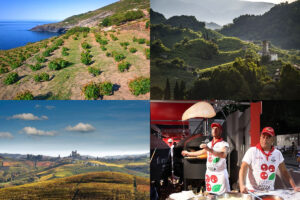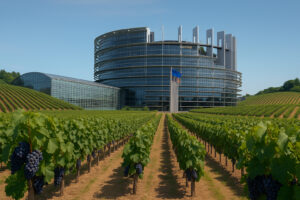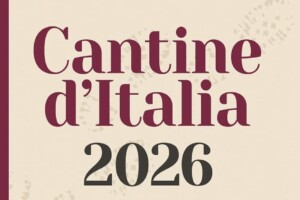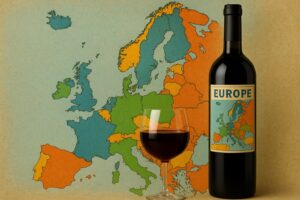- World wine consumption grows by over 266 million bottles per year…
Between 2001 and 2005 world wine consumption increased by 4.15%, stabilizing at 227,881 million hectoliters, or the equivalent of 30,384 billion bottles. Between 2005 and 2010, consumption should increase by another 4.8% thus reaching 238,825 million hectoliters (31,843 billion bottles). In 10 years (2001-2010), wine consumption will have therefore increased by 20.02 million hectoliters, for a total of 2,669 billion bottles. The average increase in consumption will stabilize at 266.9 million bottles per year.
- …and consumer spending increases by over 1.9 billion dollars per year
Wine sales earnings (retail sales) reached 106,985 billion dollars in 2005, registering an increase of 9.8% in respect to 2001. This sum should increase by 9.4% between 2005 and 2010, reaching 117,038 billion dollars. In 10 years (2001-2010), the increase will thus be equivalent to 19,598 billion dollars with an average growth rate of 1,959 billion dollars per year. Global earnings are equivalent to that earned by the cosmetics industry and three times that of the world music industry.
- In 2010 the United States will be the primary market for wine consumption.
With a consumption of 27.3 million hectoliters of wine in 2010 (12.3% of the total global consumption), the United States will become the top consuming market in the world, moving ahead of Italy (27,204 million hectoliters) and France (24,889 million hectoliters). The U.S. has had a 19.59% growth between 2001 and 2005 and should register a further increase of 18.69% between 2005 and 2010, setting itself ahead of France and Italy (the top two world producers). In 2005 the United States was the fourth largest producer in the world, and 6th largest exporter. And with earnings of 19.17 billion dollars, the United States were already in first place for wine consumption in 2005. Earnings should increase by another 18.7% between 2005 and 2010, reaching 22.75 billion dollars.
- China and Russia will enter into the “club” of the top 10 world markets
While simultaneously increasing production, China has also increased its wine consumption by 22.45% between 2001 and 2005 and should register a further increase of 35.91% between 2005 and 2010. In 2005 it became the 10th largest wine producing country in the world and should become the 9th by 2010. Russia, where wine consumption has increased by 37.28% between 2001 and 2005, should become the 8th largest wine market by 2010.
- The variety of wines grows worldwide, but the higher segments of the market register more rapid development.
Commercial wines between 5 and 10 dollars per bottle (at retail) should register an increase in consumption of 9.12% between 2005 and 2010, while those sold for over 10 dollars per bottle will register an increase of 17.2% over the same period. At the same time, wines sold for under 5 dollars per bottle will register a growth of 2.44% by 2010. In 2005 they represented over three quarters (77%) of total wine sales.
- Red wine represents over half of world consumption of still wines
The Vinexpo/IWSR study offers for the first time a reading of the type of consumption of still wines by color. In 2005, the consumption of red wines represented 50.19% of total world consumption, with an increase of 7.48% in respect to 2001. It should register a further increase of 7.11% between 2005 and 2010, reaching 113,923 million hectoliters (15,189 billion bottles). A renewed interest in rosé wines has also been noted, with a world consumption increase of 3.84% and a predicted increase of 6.68% between 2005 and 2010. As for white wines, which in 2005 represented 40.6% of total world consumption, the increase should be limited to 0.54% between 2005 and 2010.
- Per capita consumption of the majority of wine markets around the world continues to increase.
Among the top 20 markets for consumption levels per inhabitant (within drinking age limits), only 6 will register a regression between 2005 and 2010 (France, Switzerland, Portugal, Argentina, Austria and Spain). Among these, 5 are producing countries and register consumption levels superior to 40 liters per year per person. The other world markets, whose consumption was analyzed by Vinexpo/IWSR, registered regular increases in consumption. It should be remember that for an adult of legal drinking age, the average annual consumption of 40 liters per year is equivalent to one 75 cl bottle per week.
- The difference between world consumption and world production should diminish by 2010.
Apart from climatic phenomenon, world wine production is showing a tendency (for the 10 years between 2001 and 2010) of a diminishing of the differences between world production and consumption. Between 2005 and 2010, the difference should shift from 32,599 million hectoliters to 23,361 million hectoliters, representing 8.7% of the current world production.
- International exchange continues to develop rapidly.
In 2005, the consumption of imported still wines reached 51,304 million hectoliters (24.2% of world consumption), with an increase of 20.9% in respect to 2001. By 2010, it should reach 58.82 million hectoliters, a further increase of 14.65% in respect to 2005. Globally, in 10 years (2001-2010), the consumption of imported wines will increase by 38.6%, or 4 times that in respect to global wine consumption.
Copyright © 2000/2025
Contatti: info@winenews.it
Seguici anche su Twitter: @WineNewsIt
Seguici anche su Facebook: @winenewsit
Questo articolo è tratto dall'archivio di WineNews - Tutti i diritti riservati - Copyright © 2000/2025








































































































































































































